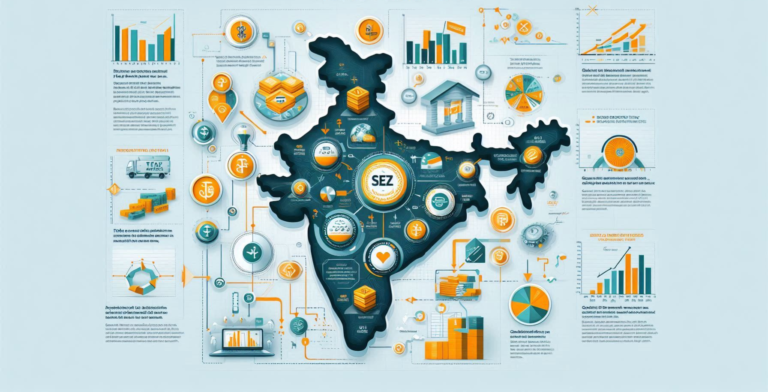
ABSTRACT
In today’s world cybercrime is a prevalent thing and it is more common that cyber crime against women are becoming a major target of these cyber fraudsters. This is because women are mostly neglecting their cyber security from other people. To have a better understanding of how cyber crimes becoming a serious issue and the different types of fraud that women are vulnerable to like stalking, defamation, ransomware and others. This research paper gives a brief understanding of it.
This research paper aims to explain the rapidly increasing cybercrime against women in India. In this era where hacking and trespassing one’s personal life has become easier for fraudsters and they do this frequently because they do not have to show their faces or present there to commit an offence, they can easily do this by internet and women mostly soft target for them because, in most of the time, women ignore these serious matter or do not want to disclose it to anyone. In this situation, women need to be aware of their rights and the safety measures that should be taken to ensure their cybersecurity.
So, this research paper discusses the cyber-related legal provisions with the help of the given data and statistics and also discusses the important measures that women must take for safety to avoid cyber fraud. This research paper will help you to provide basic and necessary information about the cybercrime that happens against women in India.
Keywords : Cybercrime, India, Stalking, Ransomware, Defamation, Women, Cyber-law,
INTRODUCTION
When we talk about the women’s presence in today’s world, we see a drastic change in the society. As time passes, we observe that women are becoming more independent. As the world progresses, crimes against women are increasing at an alarming rate. Women are becoming more vulnerable and cybercrime plays an important role in it. In today’s world, the internet plays an important and major role in society.
It connects the whole world. The Internet is the thing that makes the lives of people easier and less time-consuming. “There are both advantages and disadvantages to it.”. As the internet plays a significant role in society, it also brings a few disadvantages. The major drawback that arrived after the misuse of the internet is ‘Cybercrime’. To gain a better understanding of cybercrime, it is important to first have a clear understanding of what it is.
A computer-generated environment is ‘cyberspace’ and the rules that are governed by it are ‘cyber laws’ which deal with legal issues that occur on the internet. These issues or crimes that happen through the internet are called ‘cybercrime’.
BACKGROUND
“The internet has empowered the world at large.”. It helps people to do their work easily and more efficiently and it played a major role at the time of covid 19. But as we know, every technology has some disadvantages too. During the period of COVID-19, the cybercrime rate has been increasing more as people spend more time on the internet. When people spend more time on the internet, there are a few hackers and fraudsters also who are finding new and easy ways to harm people’s reputations or commit fraud with them.
When this internet thing was new and people were finding new ways to do work from home, these fraudsters found a way to take the hard earnings of the people with illegal and shortcut means.
Hence, they found a way of committing crimes with computers via the internet which is called ‘cybercrime’. When the topic of cybercrimes arises, it was harder to find the culprit because you never know, who had blackmailed you or taken the money from your bank account, from where he had done all this. He can be in forests, mountains, any other state or any other country.
To commit cybercrime in India is easier because India is rapidly transitioning into a digital nation. In India, many important things such as an Aadhaar card, PAN card, and bank account are linked to your mobile number. If you make the mistake of sharing your OTP (one-time password) with a stranger or clicking on a suspicious link, it can make it very easy for someone to hack into your social media accounts, bank accounts, and other important accounts within seconds.
In this crime pattern, cybercrime is rooted in society and it developed more from the time of COVID-19.
TYPES Of CYBER FRAUD
There are many types of cybercrimes are happening in today’s world:
Cyber Stalking: “Cyberstalking” refers to a situation where a perpetrator sends inappropriate and offensive messages to a woman through her social media account. The goal is to harass and blackmail the victim into sharing their personal information or pictures. The cyberstalker can be a stranger or someone the victim knows personally. When the person is tracking the location of the victim visiting her profile maximum time in a day or week or impersonating his online identity just to harm her reputation in society or disturb her personal life it also comes under cyberstalking.
Ransomware: When a fraudster sends unauthorized links or fake warnings to a woman and she clicks on them, she may receive a message indicating that her personal information has been shared with the fraudster. These links or warnings are also used for payments to unlock your profile or device which is locked by the fraudster.
Cyber Defamation: When a fraudster sends vulgar messages or comments on a person’s photos, it is considered cyber defamation. Cyber defamation can also be known when the fraudster sends objectionable photos to the victim or harms her reputation in society by making defamatory statements or acts.
Cyber Bullying: Cyberbullying majorly happens with women, when the fraudster harasses or threatens women on her networking site. when the internet gives every person the right to post anything on social media, it also gives responsibility not to harm the identity of any other person. In ‘cyberbullying’ the fraudster posts humiliating content against the victim, posts vulgar comments or messages on her post or in her inbox. Threatens her to commit acts of violence.
Pornography: This occurs when fraudsters share doctored images of women on social media platforms in order to demand payment or to commit violent acts.. His main purpose is to harm the identity and relationship of the victim. Pornography can be done with anyone but it majorly happens with women by posting vulnerable or morphed pictures on social media.
Cyber Grooming: Cyber grooming is a long-term cybercrime against women in India. When a women build any relationship with any stranger on social media or make any friends on the platform, the other person repeatedly tries to get her involved in sexual acts with her or if she denies it, he starts pressurising her for the same.
CYBER-CRIME RATES AGAINST WOMEN IN INDIA

In 2022, cybercrime cases against women in India rose by 24.4% according to NCRB.

In 2023, India ranked as the 80th most targeted country for cybercrime globally. Local threats affected approximately 34% of users, according to International Data Corporation (IDC).
LEGAL PROVISIONS OF CYBER-CRIMES AGAINST WOMEN
Indian Penal Code, of 1860:
354A talks about sexual harassment and punishment for sexual harassment in which a man who shows any pornography to a woman or demands any sexual favor against her will, shall be punished with rigorous imprisonment for a term which may extend to three years or with a fine or with both.
354C talks about voyeurism in which any man who watches or captures objectionable photos shall be punished on first conviction with imprisonment which may extend to three years.
354D talks about stalking in which clause 2 of the section talks about the stalking which is done by the monitors, internet or emails used by her.
499 talks about defamation if any person publishes anything intending to harm the reputation of the other person.
509 talks about the words gestures or any act done to insult the modesty of women shall be punished with simple imprisonment which may extend to three years.
INFORMATION TECHNOLOGY ACT,2000
66 talks about computer-related offences in which if any person or company does any fraudulent act or cannot provide safety for the personal data to the person then it shall be punishable with imprisonment for a term which may extend to three years or with a fine which may extend to five lakh rupees or with both.
66C talks about the punishment for identity theft in which if any person fraudulently misuses the other person’s electronic signature and passwords then he shall be punished with imprisonment of either description for a term which may extend to three years and shall also be liable to fine which may extend to rupees one lakh.
66D talks about punishment for cheating by personation by using computer resources which means if any other person cheats the other person with communication devices or computer resources then he shall be punished with imprisonment of either description for a term which may extend to three years and shall also be liable to fine which may extend to one lakh rupees.
66E Punishment for violation of privacy which means if any person intentionally or knowingly captures, publishes or transmits another person’s private area photos without his consent, then he shall be punished with imprisonment which may extend to three years or with a fine not exceeding two lakh rupees, or with both.
67 talks about the punishment for publishing or transmitting obscene material in electronic form which means a person cannot publish or transmit obscene material then he shall be punished with first conviction with simple imprisonment which may extend to five years and then subsequent imprisonment which may extend to seven years with fine.
67A talks about the punishment for publishing or transmitting material containing sexually explicit acts, etc., in electronic form which means if any person has published or transmitted any material in the electronic form that contains sexually explicit acts or conduct then he shall be punished with first conviction with simple imprisonment which may extend to five years and then subsequent imprisonment which may extend to seven years with fine.
Section 111 of Bhartiya Nyaya Sanhita, 2023discusses organized crime, including cybercrime, and their respective punishments.

Initiatives that are taken for the welfare of the women:
NATIONAL COMMISSION OF WOMEN: The National Commission of Women (NCW) was established in the year 1992. The government of India governs it. Its headquarters is in Delhi. The objective of this commission is to help women and provide them a voice for their issues. They have taken the following measures for the cybercrime against women:
Cybercrime prevention against women and children (CCPWC): This scheme has been made for the benefit of women and children by the Ministry of Home Affairs. It has an online cybercrime reporting unit for women and children, it also gives brief knowledge about the laws and regulations of India regarding cybercrime. This unit has a team of cybersecurity professionals who analyze various types of cybercrimes and assist victims with related laws.
National Cybercrime Reporting Portal (NCRP): This portal under (the Indian Cyber Crime Coordination Centre) ‘I4C’ was launched on 30/08/2019. It is a sort of updated version of (NCW) because NCW only reports a few types of complaints whereas this portal allows victims to report all types of cybercrime from anywhere in India. It has an online status tracking facility for the reported crime. It has an online chatbot which is specifically made for this purpose and chats with the victim for the reported issue named ‘VANI-(CyberDost)’. It also does campaigns for the awareness of cybercrimes.
Digital Literacy and Cyber Safety Programme: The National Commission for Women has also a safety programme in collaboration with Facebook and the Cyber Peace Foundation which spreads awareness in schools and universities related to this cybercrime that women may face.
Digital Shakti Programme by NCW: It was started in June 2018 to help women across the nation. This campaign has been spreading awareness among women and has an interactive panel discussion on “Safe Spaces Online Combatting Cyber-Enabled Human Trafficking & Combatting Other Forms of Online Combatting”. The third phase of this program started in March 2021 at Leh to provide resources for the information and cyber crimes that may face by women.
PREVENTIVE MEASURES THAT SHOULD BE TAKEN
Strong password for the accounts: Always make a strong password for your email, social media accounts etc and do not share the password of the same with anyone, it can lead to cybercrime and can harm the security of your account. Regularly change the password for the accounts and never open the emails or links that look like spam.
Do not share or capture intimate photos or videos: Never share intimate photos or videos with anyone and also do not capture these types of photos or videos because anyone can hack your device and use it for blackmailing in such cases
If this happens to you or someone you care about, please make sure to report it: It’s important to have the strength to tackle the issue and report it immediately to the nearest police station or by filing an online complaint on the helpline portal designated for women who have experienced cybercrime.
Awareness for the same: Everyone should have awareness of these issues and know how to tackle them, especially women because these crimes especially happen with women for blackmailing or harming their reputation. It is essential to have knowledge about the right prevention methods.
Conclusion of this Research Paper
This research paper provides concise knowledge about cybercrime against women across the nation. In today’s world, it is unfortunate that many women have experienced different forms of cybercrime in their personal lives. Some have been victims of cyberbullying, cyber hacking, cyber pornography and other similar crimes, but only a few have officially reported these incidents. This can embolden cybercriminals to continue committing these heinous acts.
This paper has discussed the preventive measures, related laws and the National Commission of Women which reports all the cyber reports across the nation. No doubt that our system still has some loopholes. The author of this research paper has tried to show you the relevant facts and the initiatives of the government towards making a better society for women.
REFERENCES :
- India saw 129 cybercrimes per lakh population in 2023 |India News – Times of India (indiatimes.com)
- currentaffairs.adda247.com
- Cybercrime Against Women – ClearIAS
- https://cyber.delhipolice.gov.in/Crimelist.html
- https://cybercrime.gov.in/Webform/FAQ.aspx
- Complaint & Investigation Cell | National Commission for Women (ncw.nic.in)
- ipc_act.pdf (indiacode.nic.in)
- it_act_2000_updated.pdf (indiacode.nic.in)
- Indian Cybercrime Coordination Centre (mha.gov.in)
- National Crime Records Bureau (ncrb.gov.in)
- Cyber Crime Portal
- www.cybercrime.gov.in
- Press Information Bureau (pib.gov.in)
BOOK REFERENCE :
- WOMEN AND THE LAW BY DR. NUZHAT PARVEEN KHAN
- BHARTIYA NYAYA SANHITA,2023
- INDIAN PENAL CODE,1860
- INFORMATION TECHNOLOGY ACT,2000




